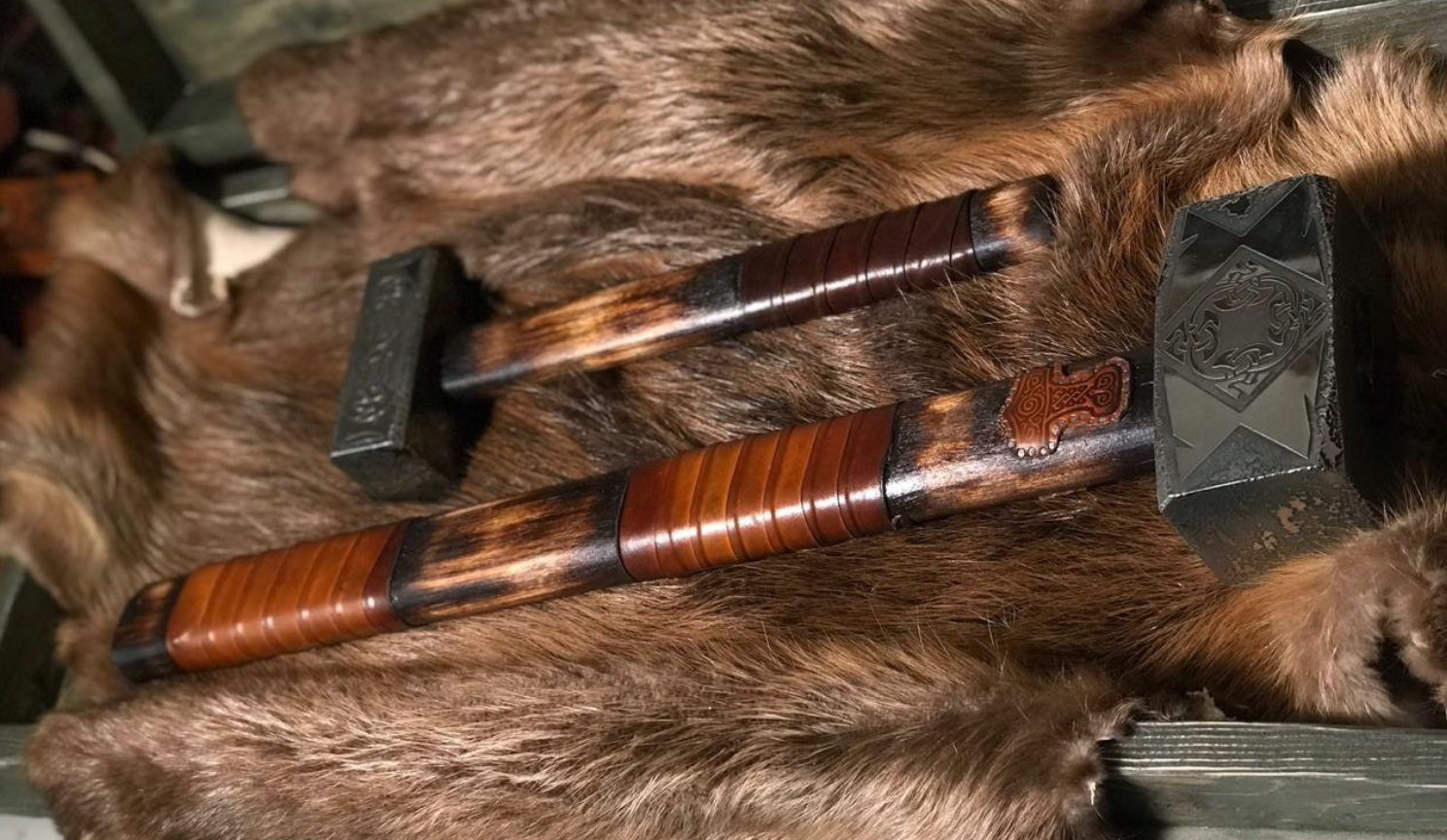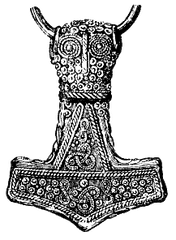on all orders over $100
on all orders over $100

In Norse mythology 'Mjölnir' was the name given to the hammer which was wielded by Thor, the god of thunder. The name roughly translates as 'crusher' from old norse.
It was mentioned in various sagas and was said to be the most powerful weapon in existence, capable of levelling entire mountains in a single stroke. Obviously this was no normal hammer, as it was empowered with magical abilities which made it such a formidable weapon.
The traditional Mjolnir design was quite unusual, with a handle much shorter than that of a normal hammer. This was due to a fault during the manufacturing, however it gave the weapon a distinct look that is easily identifiable.
Historically accurate replica of a Mjolnir pendant found in Erikstorp
The hammer itself was said to have been made by two dwarven brothers; Elitri and Brokkr. The story said that in his characteristic mischievousness Thor's brother, Loki, cut the hair of Sif, Thor's wife. Obviously this angered Thor greatly and in order to avoid a vicious beating Loki promised to find a new and superior head of hair for Sif.
Loki then went to two drawven brothers in Svartalfheim and tasked them with making a new head of hair. They made the hair for Loki, along with the great ship, Skidbladnir, and the lethal spear, Gungnir. However Loki was not finished with his mischief and he recruited two other dwarves to see if they could out do the original pair. The second group of dwarves, Elitri and Brokkr, created a boar with beautiful flowing hair. They also created Draupnir, a golden ring which multiplied to 8 rings every 9 days (thought to be one of the many Norse influences on Tolkein's Lord of the Rings universe) and finally, Mjolnir.
In the Prose Edda it says that while the hammer was made Loki turned into a fly and bit one of the dwarves causing blood to run into his eye, this lead to a mistake in the manufacturing and mjolnir being made with its iconic short handle.

Mjolnir necklace that was found in Bredsättra, Sweden picture from Nordisk familjebok
Mjolnir was perhaps the most common symbol amongst the North germanic peoples often being used in jewelry to symbolise protection for the wearer. It was even carved above doorways to provide protection against harsh storms.
In Norse Mythology this magical hammer was much more than just a just an instrument of war, It was also used in many ceremonies and rituals such as births, weddings, and funerals.
The hammer as a symbol was associated with protection from the forces of chaos, evil and violence. This was a crucial element for the Gods ability to protect Asgard from the Jotun; without it Thor would not have been able to keep the Aesir safe. It was for this reason that the Mjolnir symbol became so commonly used in Norse culture and was associated with protection against such malicious forces.
A more modern adaptation of the traditional Mjolnir Design
Over 50 different Mjölnir pendants have been found at Viking graves in Scandinavia and England, most are estimated to have been used from the 9th century to the 11th century AD.
The symbol was traditionally associated with Thor, however it may have been a way to display ones devotion to the wider Norse religion. It was thought that the Mjolnir pendants had become particularly popular when Christianity was spreading throughout Northern Europe, where people would wear them as a sign of defiance against the newly converted Christians.
Historically Accurate Mjolnir Replica Pendant with King's Chain
As the cross was a common symbol that Christians would wear to show their devotion to Christ, it became a symbol of ones devotion to Thor to wear a Mjolnir around ones neck. It should also be noted that during this time period there was also significant overlap between the two religions, and may have been common to wear both a Mjölnir and crucifix at the same time.
There are numerous historical artefacts which depict both the Pagan Mjolnir and Christian Cross symbols together such as the Thorwald's cross in the UK with both Pagan and Christian engravings. There have also been Viking burial sites in Sweden and Denmark where the bodies were buried with both Mjolnir and Crucifix necklaces.
The symbol is still widely used today in the modern Norse community and those practicing the Asatru faith. There are many depictions of Mjolnir in the modern day on jewelry, T-Shirts and in various Metal bands.
Thanks for reading, we hope you learned something new about the history of one of Norse Mythology's most important symbols. If you have any questions or have anything to add please leave us a comment below.
Check out our range of >>> Mjolnir Necklaces <<<
Leave a comment